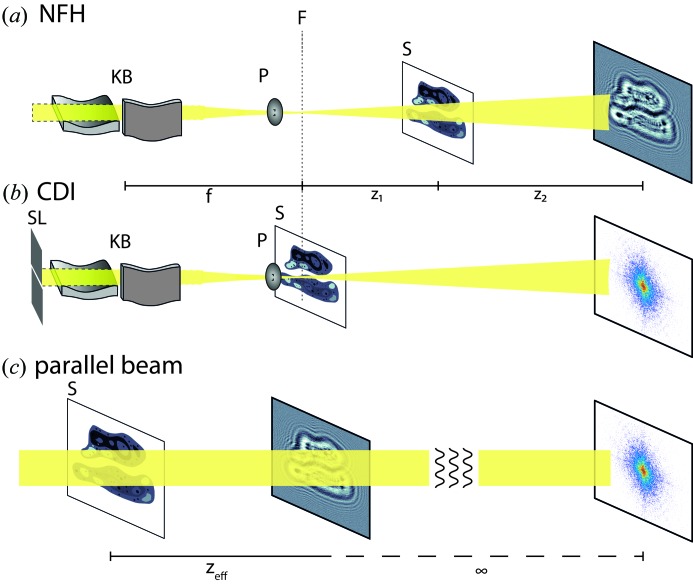Figure 1.
Experimental implementations for (a) NFH and (b) CDI, shown in a diverging beam geometry (in particular for a synchrotron setup; cf. Salditt et al., 2015 ▸). The beam is focused by Kirkpatrick–Baez mirrors (KB), then a pinhole (P) is commonly used as a low-pass filter for removing high spatial frequencies in the probing beam. For CDI the specimen (S) is placed in the focal plane (F), while for NFH it is placed at a defocus position z 1. The detector is then placed at a distance z 2 behind S. This yields for NFH a (de-)magnification of M = (z 1 + z 2)/z 1. Note that in order to satisfy the coherence requirements for CDI the effective source size has to be reduced by slits (SL). (c) The imaging configurations transferred to the setting of a collimated (parallel) beam. This is achieved via a simple coordinate transform (i.e. Fresnel scaling; Paganin, 2006 ▸), where the effective propagation distance is given by z eff = z 2/M.

